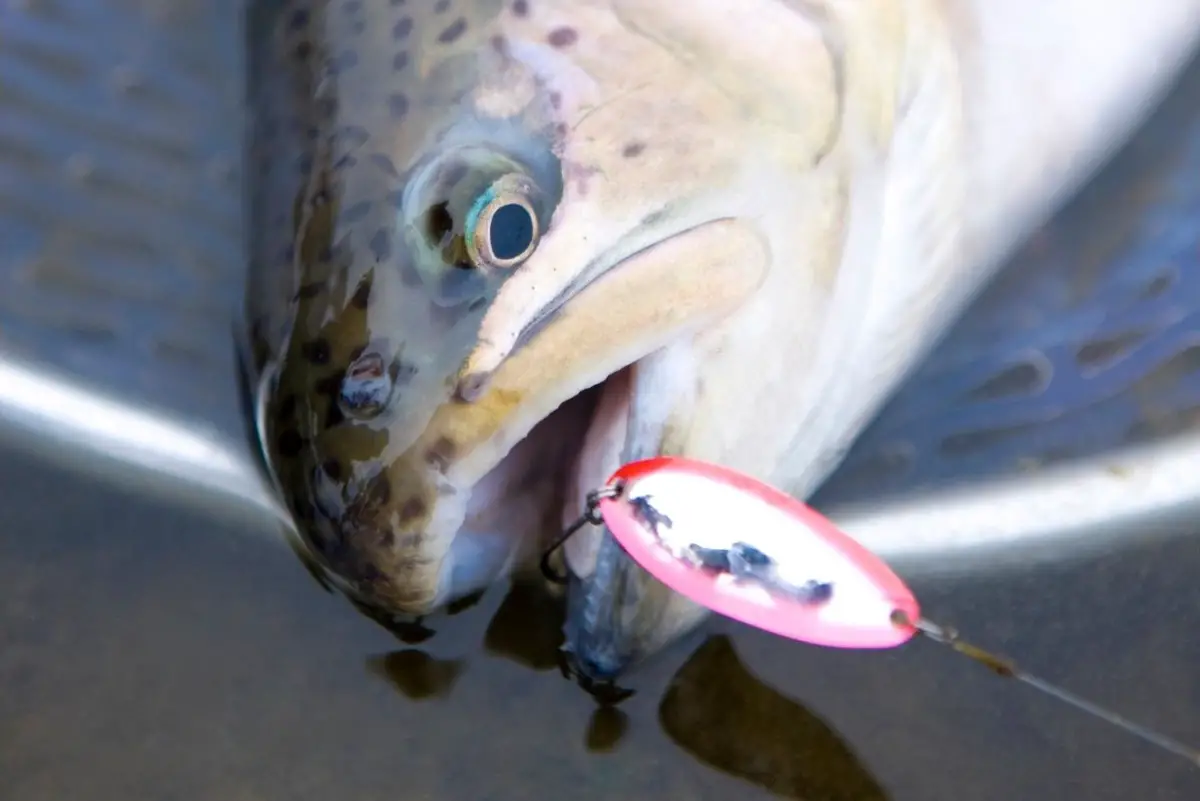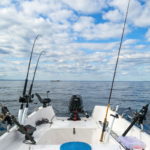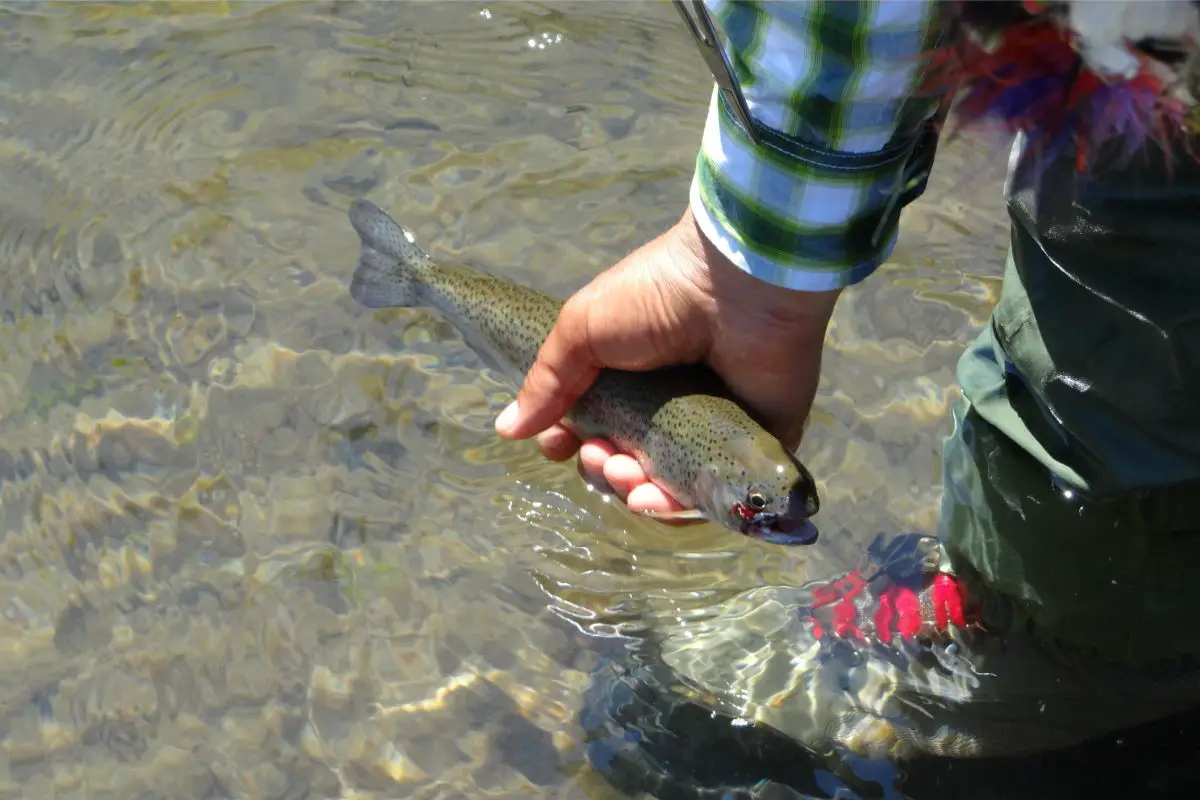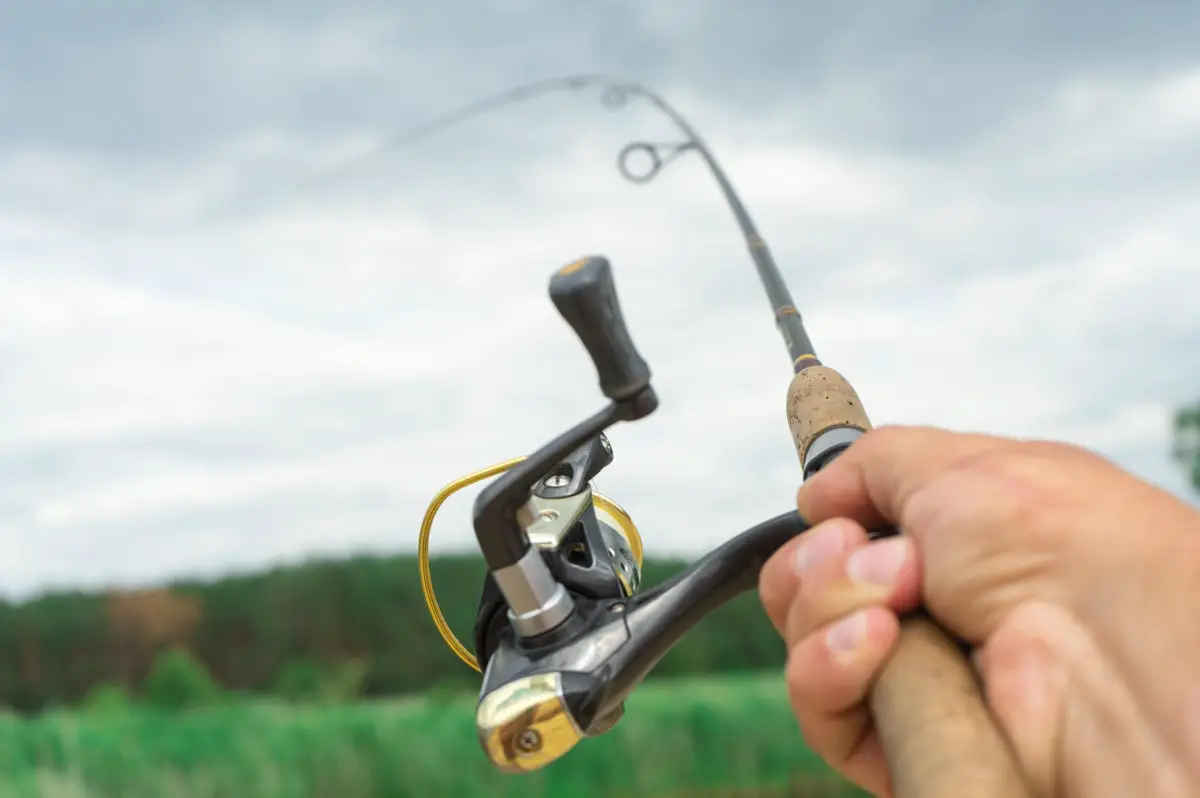If you’re a bank fisherman targeting rainbows, you might never have thought spoons were an option for your tackle box. Frequently, you see spoons used fishing from a boat, where they are jigged and fluttered straight up and down to elicit strikes from fish suspended in the water column or holding the bottom.
Spoons are also an intimidating lure for targeting rainbow trout in a stream because of their weight and exposed hooks – two factors that would scare any frugal bank fisherman.
However, you can catch rainbow trout in a stream with spoons using tactics called “cast and swing” or “cast and retrieve.” Both tactics involve casting, allowing the spoon to sink, then managing your depth by swinging with the current or retrieving the spoon across the current. These two different tactics depend on what type of current you are casting into.
When nothing else will trigger one of nature’s most finicky predators to strike, the trusty spoon will make all the difference. So let’s take a deep dive into the spoon and how to use it effectively in a stream to target rainbow trout.
Note: most links in this article are Amazon.com Affiliate links, see Affiliate Disclosure, thank you.
Don’t Shun the Spoon’s Simplicity
The fishing spoon doesn’t look like much, but sometimes the simplest tools are the most effective. They take their name from their typical shape – wider and more rounded on one end with a concave depression.
The form of these hunks of metal gives them their action in the water, wobbling back and forth seductively like an injured baitfish that throws off an immense amount of attention-grabbing light and vibration. For a hungry rainbow trout, the spoon looks like an easy lunch.
The ancient Romans are said to have used an early type of fishing spoon made from clam shells over 2,000 years ago, but you can rest assured many innovations have been made since then. The kind that works the best for catching rainbow trout in a stream is the teardrop-shaped casting spoons.
Jigging spoons are heavy and designed for a fluttering presentation as they descend through the water column. The lighter teardrop-shaped spoons are meant to be retrieved and will wobble as they’re pulled back towards the bank similar to a rooster tail spinner.
The Proper Rig
There are only a few techniques you need to master when targeting rainbow trout in a stream with spoons. The proper rig and setup are therefore kept simple. Spoons for stream fishing from the bank can be used on casting and spinning rods.
Because of these lures’ fast sinking rate, you will want a rod with enough sensitivity to know when you’re making contact with the bottom. An all graphite or graphite-tipped rod is ideal.
Also, you need light line-rated rods. A 2-6 pound ultralight spinning rod will launch a small spoon as far as you need it to when fishing streams and creeks. A spinning reel in the 3000 range will allow enough line to be put on the spool to fight larger fish that like to run and give you enough speed for any retrieving techniques used with spoons.
Use a braid backing with a fluorocarbon leader for this setup to prevent unnecessary frustration. A 10-pound braid back is plenty for trout, and it won’t explode off of your reels like monofilament and fluorocarbon are prone to do. Braid makes for smoother and longer casts and won’t cause your spoon to twist during the retrieve.
Braid also has more sensitivity because it has no give. Attach a 4-pound fluorocarbon leader with a uni-knot at least as long as the length of your wingspan, roughly six feet. Fluorocarbon doesn’t transmit light through it for an invisible presentation in clear water.
A swivel or a ring with a snap needs to be used between your fishing line and the spoon. A line tied straight to the spoon will diminish its movement and make for a less appealing presentation to the fish.
The spoon needs complete freedom of movement, throwing off light and vibration to mimic a baitfish as you retrieve it through moving water. Keep this extra hardware as small as possible and match the color to your spoon. Also, you can use a fixed loop style knot, but we like including a snap for easy lure changes.
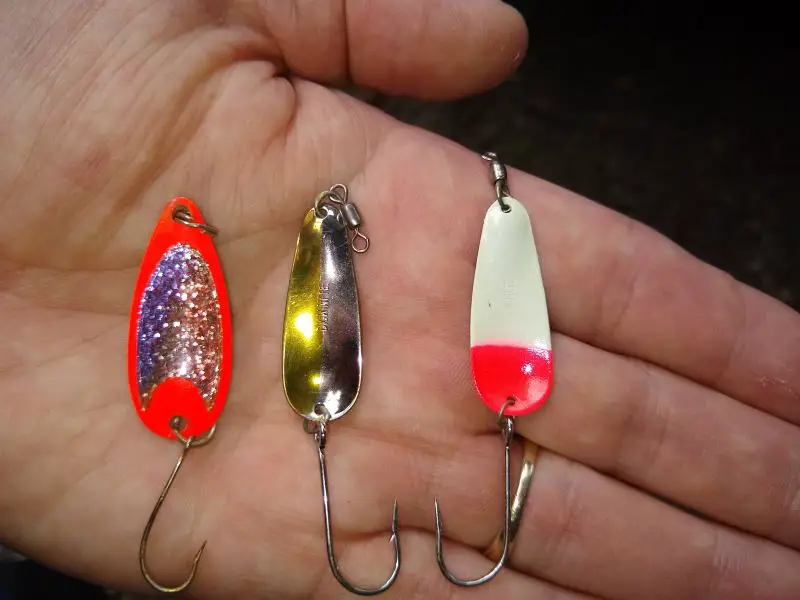
Choosing Spoons For Catching Rainbow Trout in a Stream
When choosing spoons for rainbow trout, you can approach it similarly to spinner baits like the Rooster Tail. Like Rooster Tails, spoons come in an array of patterns and colors. You can find spoons sold in packs in multiple colors, and these will be an excellent place to start.
Always ensure you have a silver and a gold spoon just as you would with a spinner bait because trout just love one or the other more times than not. Combinations like blue and silver also work great.
Don’t limit yourself to one or two colors. Often thinking outside of the box with walleye colors like green or chartreuse can be game-changers on a bright sunny day. My secret favorite color is black or carbon fiber. Add a carbon fiber pattern sticker to the back of a cheap spoon, and boom, fish on!
If you are learning how to use spoons for rainbow trout in a stream, it’s best to stick with any light enough for ultralight rods. You will lose plenty through hangups on rocks, grass, and other debris, and keeping it as light as possible will only reduce the likelihood.
Where To Cast Your Spoon for Rainbow Trout
This article has used the term “cast and retrieve,” but the best technique for searching out rainbow trout in a stream is a “cast and swing” approach. Fast-moving riffles that run into a deeper pool give you the best chance for success.
Make 90-degree casts just slightly upriver from you, towards the top of pools – casting up-river will give your spoon more chance to sink. But it also can snag on the bottom.
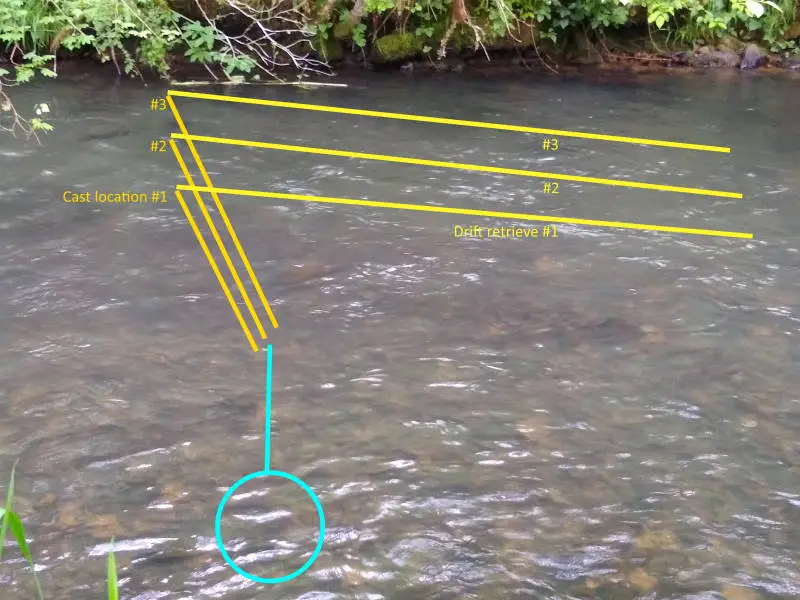
Reel your line in tight as it hits the water, and let the current push your spoon over the pools. If you don’t get a bite, cast again two feet farther across the stream in the same direction.
Keep repeating this cast and swing process until you cover the entire pool or get a rainbow trout to bite. Consider changing it up from time to time by randomly twitching your rod tip to give the spoon a different action.
Moving water is key to giving the spoon that fluttering, dying baitfish look. Even when trout are not hungry, spoons can often cause a reaction and provoke them to attack.
Streams with a lot of rocks will make more riffles and water movement, so these are areas you will have the best luck getting the trout to strike the passing spoon. Try running your spoon by individual large rocks as these are spots where trout like to hide and ambush their prey.
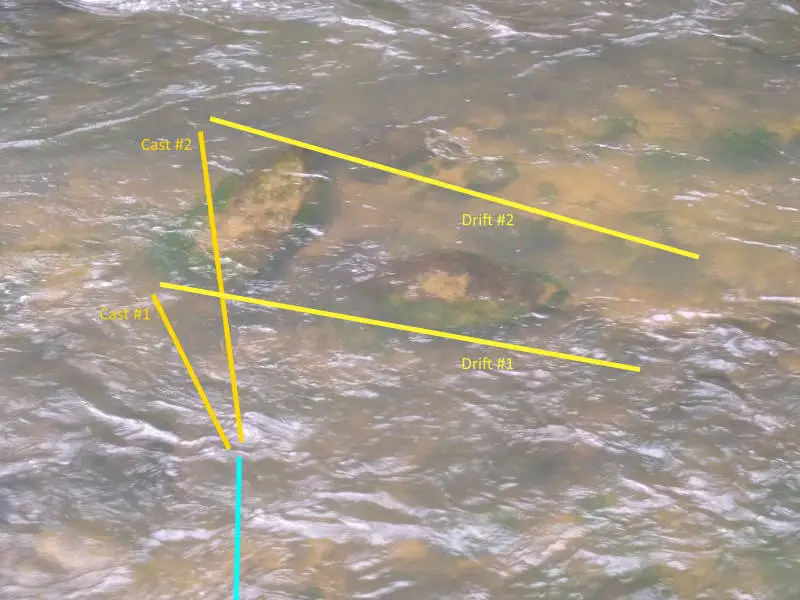
As you move up and down the bank, try casting at the bottom of the hole on the opposite side of the stream. As soon as your spoon hits the bottom, retrieve your spoon slowly on the seam. Slowly pulling your spoon along the transition can catch a fish on the move up river as it leaves the riffles to enter the pool you just fished.
Another Weapon in Your Arsenal
Don’t be afraid to try a small spoon on a light rig for catching rainbow trout in a stream. Spoons are a deadly lure that trout love.
That many anglers overlook them works in your favor as trout have become less accustomed to seeing them. They are one more weapon to add to your arsenal for success on the water.
